The Haswell Ultrabook Review: Core i7-4500U Tested
by Anand Lal Shimpi on June 9, 2013 9:00 AM ESTGPU Performance
With a modest increase in EU hardware (20 EUs up from 16 EUs), the Intel HD 4400 GPU in the Core i7-4500U I’m testing today isn’t tremendously faster compared to the HD 4000 in the i7-3517U. On average I measured a 15% increase in the subset of game tests I was able to run in Taipei, and a 13% increase in performance across our 3DMark tests. The peak theoretical increase in performance we should see here (taking into account EU and frequency differences) is 19%, so it doesn’t look like Haswell is memory bandwidth limited just yet.
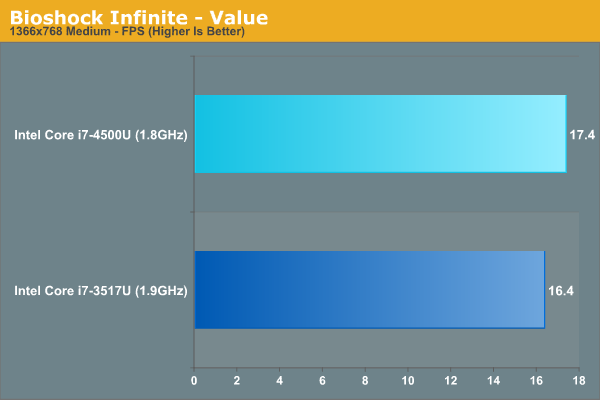
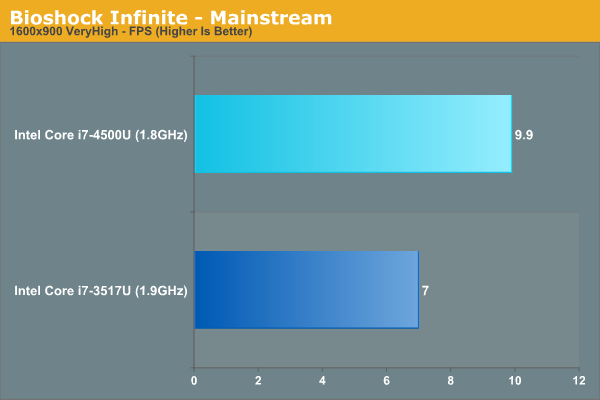
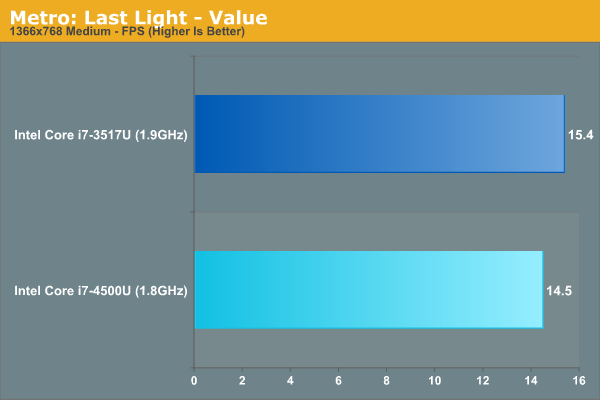
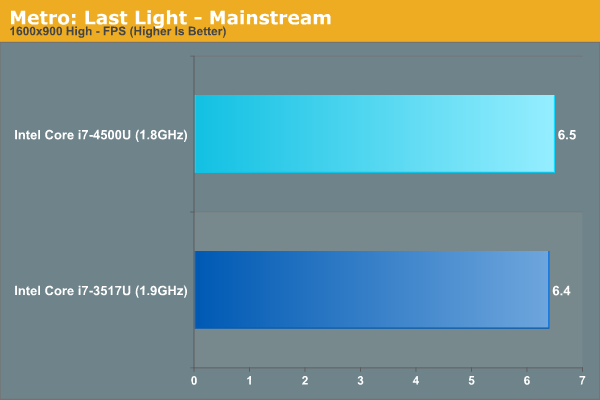
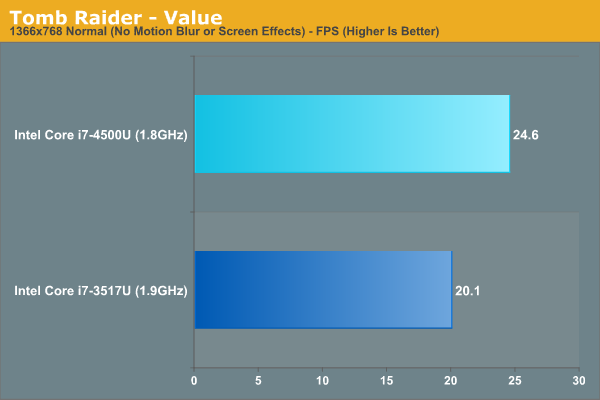
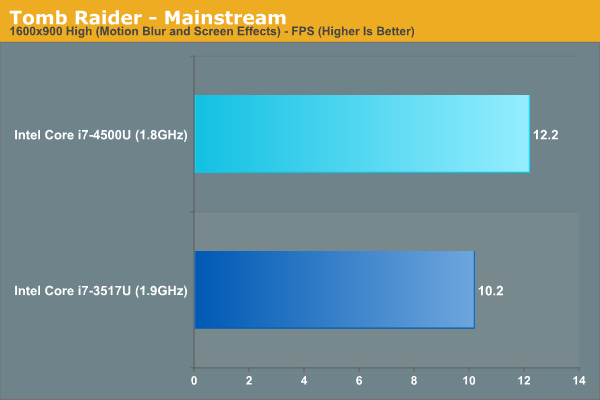


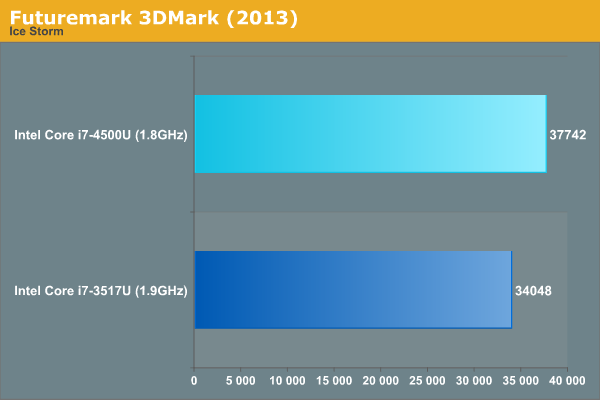
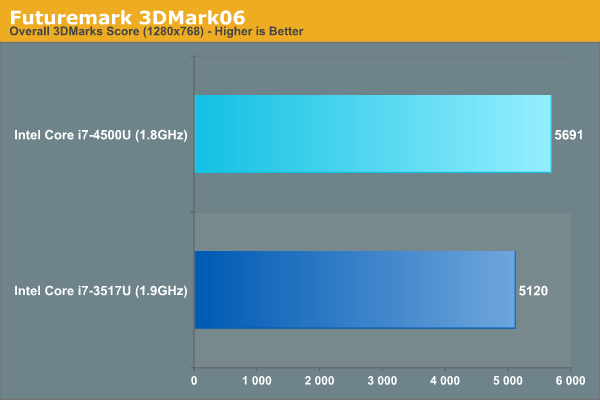
If we throw 35W Trinity into the mix, HD 4400 gets closer but it's still far away from 35W Trinity performance:
| GPU Performance Comparison | ||||||
| Metro: LL - Value | Metro: LL - Mainstream | BioShock Infinite - Value | BioShock Infinite - Mainstream | Tomb Raider - Value | Tomb Raider - Mainstream | |
| Core i7-3517U | 15.4 fps | 6.0 fps | 16.4 fps | 7.0 fps | 20.1 fps | 10.2 fps |
| Core i7-4500U | 14.5 fps | 6.5 fps | 17.4 fps | 9.9 fps | 24.6 fps | 12.2 fps |
| A10-4600M | 16.8 fps | 8.0 fps | 25.8 fps | 10.0 fps | 30.1 fps | 12.7 fps |
For light gaming, Intel’s HD 4000 was borderline reasonable. Intel’s HD 4400 takes half a step forward, but it doesn't dramatically change the playability of games that HD 4000 couldn't run well. Personally I’m very interested to see how the 28W Iris 5100 based Haswell ULT part fares later this year.










87 Comments
View All Comments
JDG1980 - Sunday, June 9, 2013 - link
Do Haswell notebook chips have the same crazy high temperatures on full load that the Haswell desktop chips do?dealcorn - Sunday, June 9, 2013 - link
I am not comfortable with your suggestion that DEVSLP's 2 mw benefit shows exclusively/primarily when the system is asleep. I sense a big benefit at low loads because the SSD's can slip in and out of DEVSLP really fact. Let's have some testing, at your leisure. Will a SSD be in DEVSLP state 50% of the time while watching non HD video? I suspect power requirements during DEVSLP is the new idle power measurement for typical home use and SSD reviews should be revised accordingly.Everything else: Bravo!
Sivar - Sunday, June 9, 2013 - link
Typo:"Haswell less than a month after the arrival of a new CEO"
Just trying to help out. :)
kallogan - Sunday, June 9, 2013 - link
What a tech revolution, a bigger battery gives a bigger battery life.FwFred - Sunday, June 9, 2013 - link
Reading is FUNdamental: "Using Acer’s Aspire S7 as a comparison platform and NORMALIZING FOR BATTERY CAPACITY DIFFERENCES I measured anywhere from a 15% to a 60% increase in battery life thanks to the move to Haswell."Emphasis mine.
kallogan - Sunday, June 9, 2013 - link
Scam. A well optimised ivy lap would do the same.Egg - Sunday, June 9, 2013 - link
Proof?Homeles - Monday, June 10, 2013 - link
I see that reading comprehension is not your strong point.kallogan - Monday, June 10, 2013 - link
I just need more than one Haswell based laptop review to draw any conslusions.seapeople - Tuesday, June 11, 2013 - link
Me too. I think Anand should have held any Haswell reviews until we've had a good five years for industry to comprehensively adopt the architecture and fundamentally evaluate the aggregate system stability on an enterprise-wide scale. Then he could submit all the reviews he had saved up.